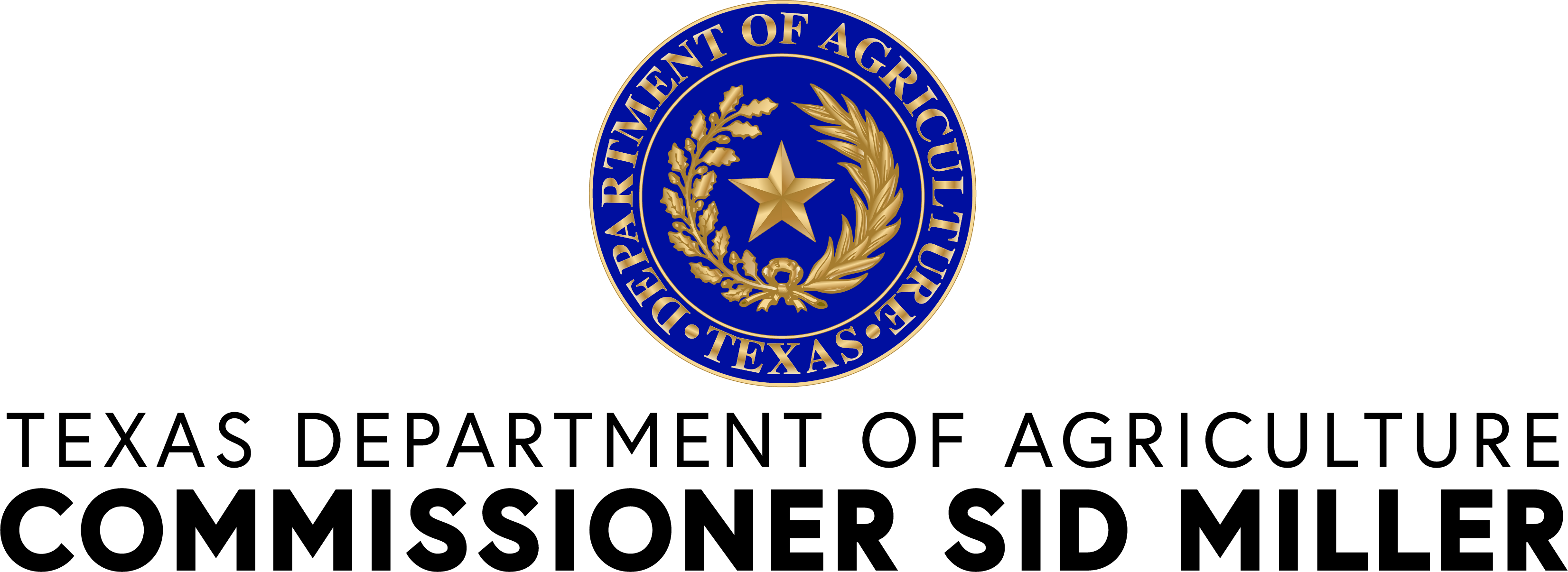|
|
|
Farm to School — Seasonality Wheel
|
|
Seasonality Wheel Instructions
Every fruit and vegetable has a season, the time of the year when locally grown options are easier to find and when fresh flavors are at their peak. Purchasing locally grown fruits and vegetables is good for Texans and good for local agriculture.
Use this tool to identify the seasons and growing regions that match your favorite fruits and vegetables!
Pick a fruit or vegetable and check for availability:
Click on your favorite fruit or vegetable in the right panel to find out when local selections will be available at the market! The Texas growing region will also highlight to show where it grows best in the Lone Star State.
Is there a fruit or vegetable you do not recognize in the right hand panel? Hover over it and the name will appear in the text box above the wheel.
Pick a month to identify locally available fruits and vegetables:
Click on any month to see what fruits and vegetables are growing in Texas during that time. Also, the toolbar on the right comes to life to illustrate that month’s best bounty. This function of the tool can help with menu planning, budgeting, and for seeking out the best tasting ingredients!
Growing region information
Texas is a huge and agriculturally diverse state. Click on any region in Texas to see what makes each growing region unique.
Texas, what’s in season?

[X]
High Plains
This region includes counties located in the Panhandle area of Texas. It is characterized by mostly flat, grassy plains, sometimes called the Llano Estacado or “Staked Plains.” There are also rough canyons, carved by rivers that wind their way through the area. This region is known for hard winter wheat, cotton and grain sorghum crops.
[X]
North Texas
This region includes counties located around the Dallas–Fort Worth Metroplex. Typical weather patterns include mild winters, hot summers and frequent, severe storms in the spring.
[X]
East Texas
This region includes counties located between the Trinity River and the state’s borders and includes the Piney Woods ecoregion. The area has a humid subtropical climate, occasionally interrupted by intrusions of cold air from the north.
[X]
Trans Pecos
This region includes the western counties of Texas. The area is known for wide-open spaces, rugged plateaus and desert mountains. Typical weather patterns include dry and hot days, cool nights and cold winters in mountainous areas. The different soils and elevations of the region support diverse habitats and vegetation. Most plant and animal species are adapted for desert conditions.
[X]
Central Texas
This region includes the counties located in the center of the state. The area is known for rolling to hilly grassland, plateaus, aquifers and large granite domes and is home to some of the oldest rocks in Texas. The area is home to several native types of vegetation.
[X]
Coastal Bend
This region includes counties located along the Gulf of Mexico. The area is a nearly-level, slowly drained plain, dissected by streams and rivers flowing into the Gulf of Mexico. The region is home to many wildlife and plant species.
[X]
Winter Garden
This region includes the counties in the southwestern portion of the state, located north of Laredo and southwest of San Antonio. The area is known for year-round production of vegetables.
[X]
Rio Grande Valley
This region includes the southernmost tip of Texas. The area is not a true valley, but a floodplain, containing many oxbow lakes formed from pinched-off meanders in earlier courses of the Rio Grande River. The area is known for Texas’ greatest citrus and winter vegetable production because of the normal absence of freezing weather and the rich delta soils.
|
|
|
|
|
|
|
|
|
|
|
Assistance available in English and Spanish. Please call 877-TEX-MEAL (877-839-6325) for help. Additional translations services available as well.
|
|
In accordance with federal civil rights law and U.S. Department of Agriculture (USDA) civil rights regulations and policies, this institution is prohibited from discriminating on the basis of race, color, national origin, sex, disability, age, or reprisal or retaliation for prior civil rights activity.
Program information may be made available in languages other than English. Persons with disabilities who require alternative means of communication to obtain program information (e.g., Braille, large print, audiotape, American Sign Language), should contact the responsible state or local agency that administers the program or USDA’s TARGET Center at (202) 720-2600 (voice and TTY) or contact USDA through the Federal Relay Service at (800) 877-8339.
To file a program discrimination complaint, a Complainant should complete a Form AD-3027, USDA Program Discrimination Complaint Form which can be obtained online at: https://www.usda.gov/sites/default/files/documents/ad-3027.pdf, from any USDA office, by calling (866) 632-9992, or by writing a letter addressed to USDA. The letter must contain the complainant’s name, address, telephone number, and a written description of the alleged discriminatory action in sufficient detail to inform the Assistant Secretary for Civil Rights (ASCR) about the nature and date of an alleged civil rights violation. The completed AD-3027 form or letter must be submitted to USDA by:
|
|
1. Mail:
U.S. Department of Agriculture
Office of the Assistant Secretary for Civil Rights
1400 Independence Avenue, SW
Washington, D.C. 20250-9410; or
2. Fax: (833) 256-1665 or (202) 690-7442; or
|
|
| This institution is an equal opportunity provider. |
 |

|
|
|